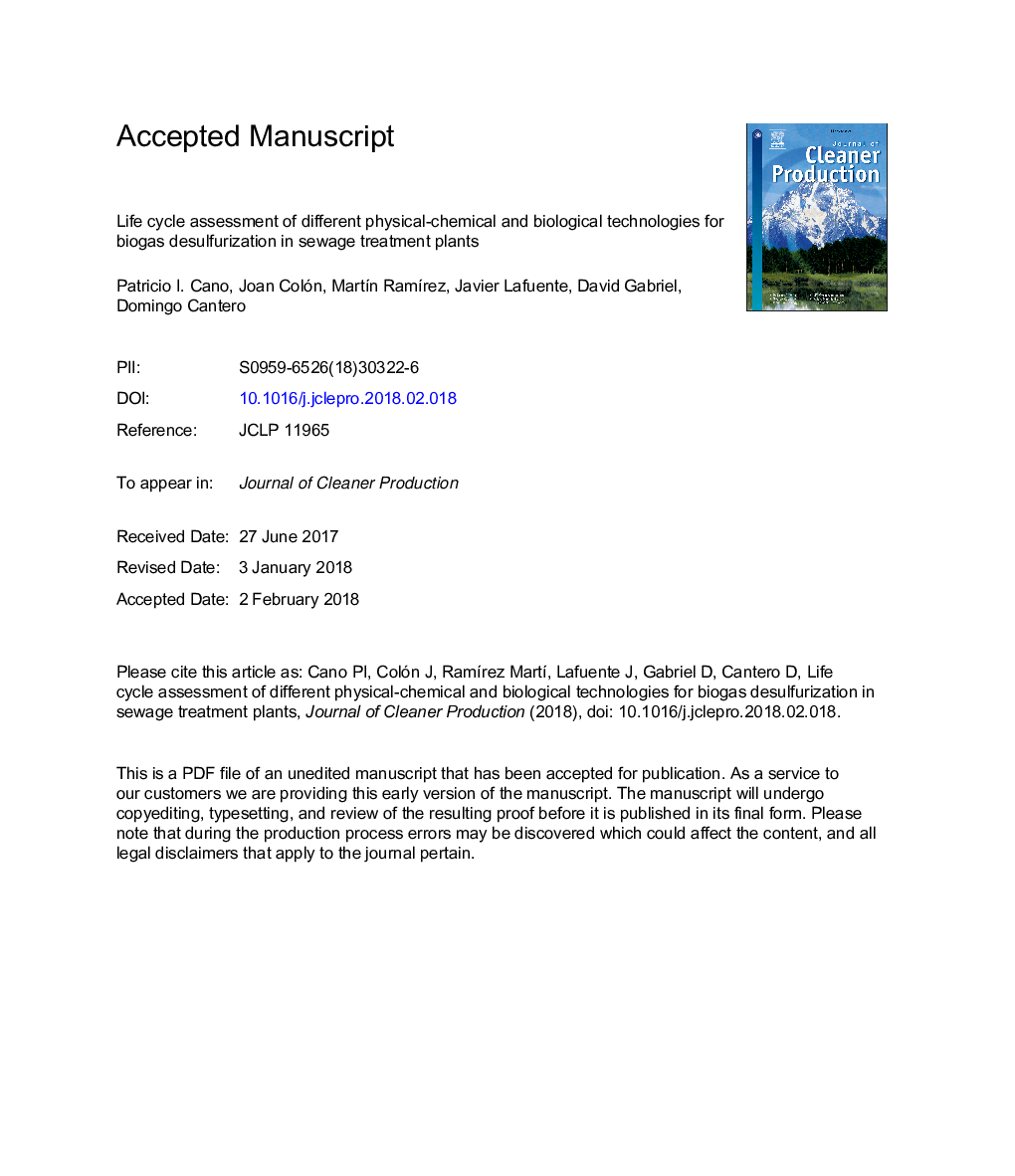| کد مقاله | کد نشریه | سال انتشار | مقاله انگلیسی | نسخه تمام متن |
|---|---|---|---|---|
| 8097756 | 1522072 | 2018 | 47 صفحه PDF | دانلود رایگان |
عنوان انگلیسی مقاله ISI
Life cycle assessment of different physical-chemical and biological technologies for biogas desulfurization in sewage treatment plants
ترجمه فارسی عنوان
ارزیابی چرخه حیات از فن آوری های مختلف فیزیکی شیمیایی و بیولوژیکی برای سولفوریزاسیون بیوگاز در گیاهان تصفیه فاضلاب
دانلود مقاله + سفارش ترجمه
دانلود مقاله ISI انگلیسی
رایگان برای ایرانیان
کلمات کلیدی
بیوگاز، ارزیابی چرخه حیات، سولفوریزاسیون، بازیافت انرژی، تحلیل اقتصادی،
موضوعات مرتبط
مهندسی و علوم پایه
مهندسی انرژی
انرژی های تجدید پذیر، توسعه پایدار و محیط زیست
چکیده انگلیسی
Biogas desulfurization can be carried out by physical-chemical or biological technologies. Biological technologies are generally described as more environmentally friendly than physical-chemical techniques, although it is difficult to find studies in which the associated environmental burdens are compared. Therefore, the aim of the work described here was to perform a life cycle assessment to compare the environmental impact of four common desulfurization technologies for hydrogen sulfide removal from biogas produced in sewage treatment plants. The desulfurization technologies studied were aerobic biotrickling filtration, anoxic biotrickling filtration, caustic chemical scrubbing and adsorption on impregnated activated carbon. The environmental assessment was extended with a Capital Expenditures (CAPEX) and Operational Expense (OPEX) analysis. Furthermore, an extra scenario (no desulfurization with biogas combustion) was compared with biogas desulfurization by aerobic biofiltration coupled to energy valorization (best-case treatment scenario). Results indicate that biological technologies are much more favorable in most environmental impact categories than physical-chemical technologies and, as expected, are more favorable than the non-treatment scenario. In all desulfurization technologies the most contributing stage to the total environmental burdens was the daily desulfurization operation. The chemical scrubber was the worst scenario except for the “Climate Change”. In terms of the “Climate Change” (carbon dioxide equivalent emission), aerobic and anoxic desulfurization would emit 13.9 and 18.7â¯kg CO2 kgâ1 S-H2S treated, respectively. The anoxic process could be improved to emit only 7.2â¯kg CO2 kgâ1 S-H2S treated if the nitrate source was produced in a nitrification reactor built at the sewage treatment plant. Caustic chemical scrubber desulfurization and impregnated activated carbon desulfurization would emit 30.0 and 42.1â¯kg CO2 kgâ1 S-H2S treated, respectively. To all impact categories, the contribution of sulfur compounds was less than 5%. The aerobic biotrickling filtration had the lower environmental impacts. However, the anoxic biotrickling filtration was the best approach if a nitrification reactor was already on-site.
ناشر
Database: Elsevier - ScienceDirect (ساینس دایرکت)
Journal: Journal of Cleaner Production - Volume 181, 20 April 2018, Pages 663-674
Journal: Journal of Cleaner Production - Volume 181, 20 April 2018, Pages 663-674
نویسندگان
Patricio I. Cano, Joan Colón, MartÃn RamÃrez, Javier Lafuente, David Gabriel, Domingo Cantero,
